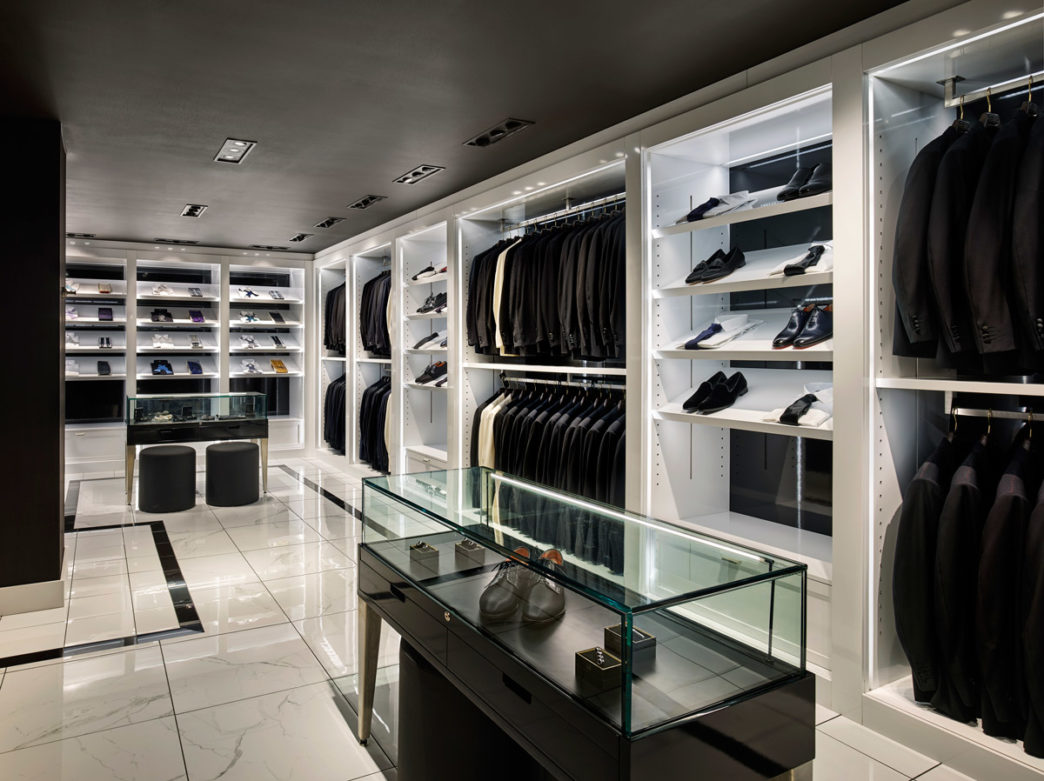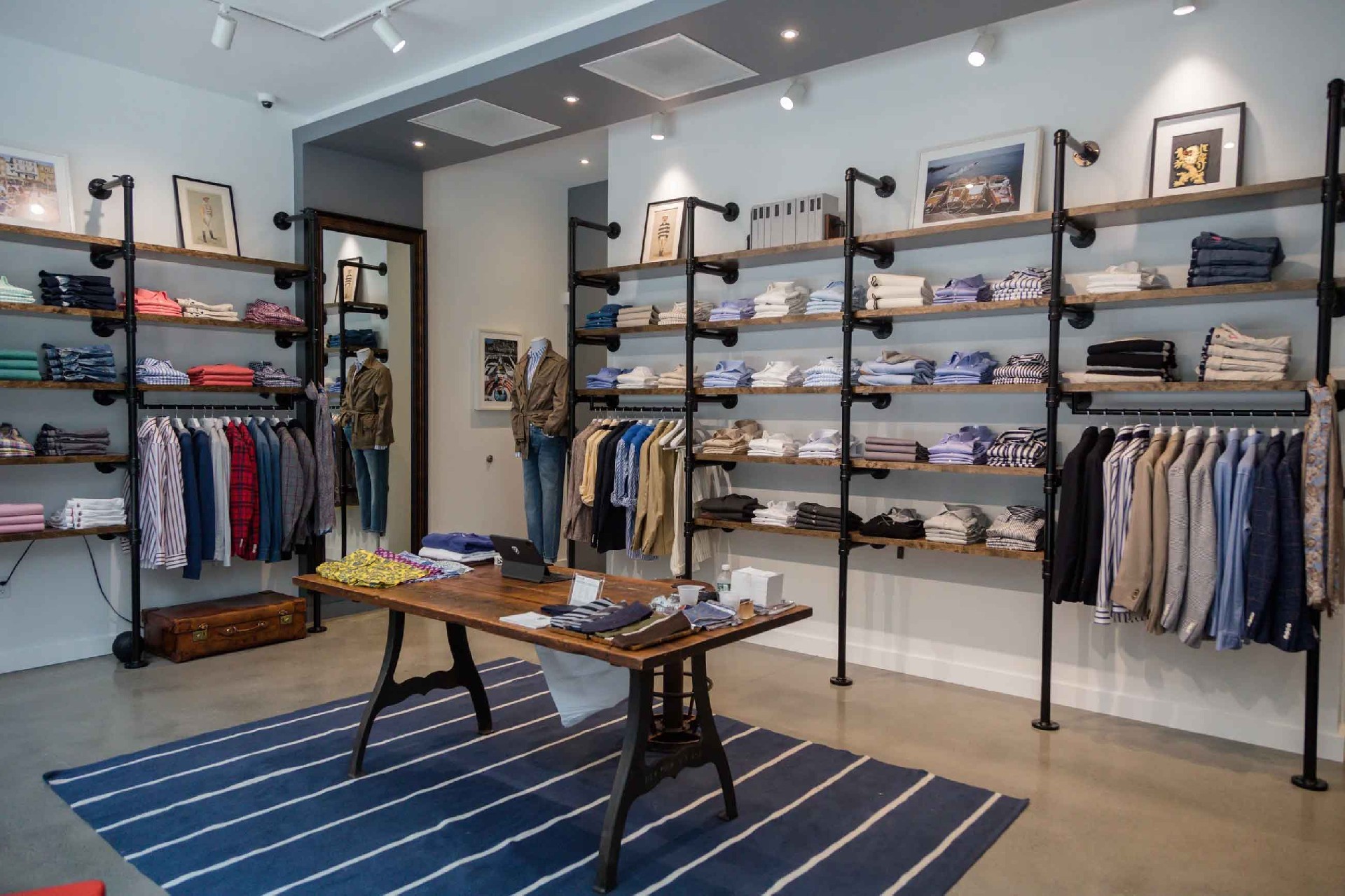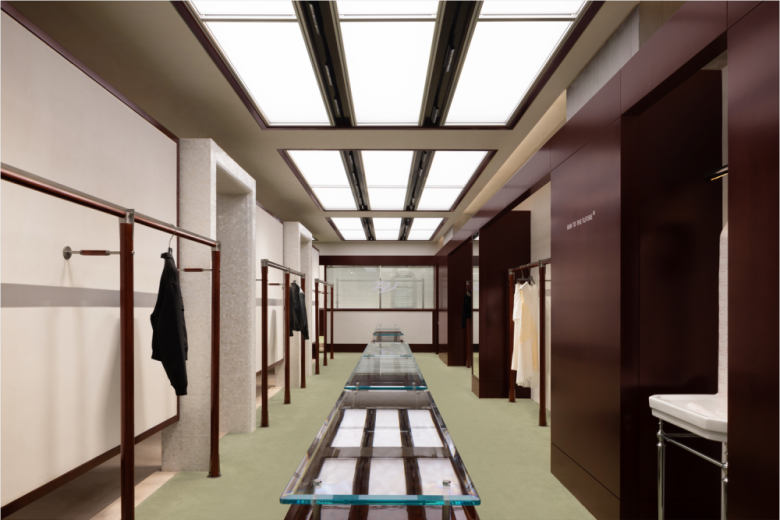In the world of premium menswear, particularly within the suit retail sector, store space layout plays a pivotal role in influencing customer experience and driving purchasing decisions. A refined layout not only shapes the visual appeal of the store but also conveys the brand’s style and values, subtly guiding customer flow and enhancing sales performance.
A well-planned spatial design starts with functionality. Each section of the store — from display zones to fitting areas — must be logically arranged to ensure smooth movement and intuitive navigation. For suit retail stores, the path from entry to fitting and checkout should be coherent and effortless, creating a comfortable shopping journey for customers.
Visual hierarchy is equally important. Suits are products that rely on fabric texture, tailoring details, and overall silhouette to communicate quality. The spatial arrangement should allow for differentiated display — highlighting premium collections, seasonal launches, and bespoke services in prominent areas, while supporting accessories and complementary products in secondary zones. This not only reinforces the brand’s premium positioning but also encourages cross-selling.
Lighting and furniture placement form another core element of store layout. Proper lighting enhances fabric sheen and texture, making colors more vivid and silhouettes more defined. Custom display furniture, such as garment racks, display tables, and mannequins, should be integrated with the overall design style to maintain visual consistency and brand identity. In high-end suit retail, the use of materials like brushed metal, fine wood, and textured glass adds a sense of refinement and sophistication to the space.
The fitting area serves as a critical decision-making zone for customers. Adequate space, comfortable seating, and flattering lighting can significantly improve the trying-on experience, thereby increasing purchase likelihood. A seamless transition from display to fitting also reduces hesitation and enhances engagement.
In addition to physical arrangement, spatial layout should consider customer psychology. Strategic placement of focal points — such as feature displays, promotional zones, or statement pieces — can attract attention and lead customers deeper into the store. This approach not only prolongs in-store time but also maximizes exposure to a wider range of products.
In today’s competitive retail market, where online shopping offers unmatched convenience, physical suit stores must focus on delivering an immersive, high-quality shopping environment. An optimized spatial layout elevates the store from a simple point of sale to an experiential space, where brand story, product quality, and customer comfort converge.
Through professional spatial planning and the integration of custom retail furniture, a suit store can not only enhance operational efficiency but also solidify its brand image in the minds of consumers. In the realm of luxury menswear, the value of a meticulously designed store layout extends far beyond aesthetics — it is a strategic asset that shapes customer perception, drives sales, and defines long-term success.






